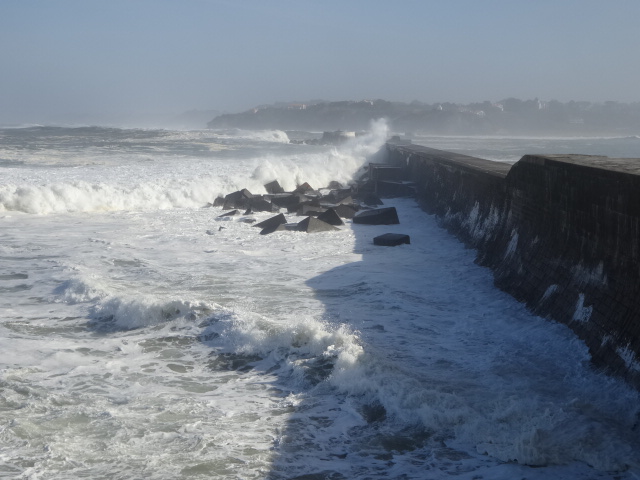‘Cometh the hour, cometh the man’

There was a regular history exam question at my school that asked students to debate whether ‘the hour made the man or the man made the hour’. It usually related to a period of history that we had just finished studying. For example – did Britain’s survival in WW2 depend solely on Winston Churchill’s leadership or were there contributing factors independent of his personality? Was Cecil John Rhodes the only person responsible for British colonialism in Southern Africa? Did William Wilberforce end the Slave Trade in Britain by himself? Must Robert Oppenheimer bear the sole responsibility for Hiroshima?
History is a tidal sea and every tide is different

History – and life generally – is a complicated series of overlapping interwoven unpredictable accidents and events that sweep us along in a flood, strand us in backwaters or drown us in cascades and rapids. As individuals we don’t have much control over it, unless we join together with others to elect governments who can act wisely on our behalf. Another question might be can we trust a government elected by voters without any civic education or respect for human rights and the law?
Man-made myths and the facts of history

Humans are curious creatures. We tell stories, sing songs, create art, mythologise our ancestors, rewrite our history and choose our heroes. We weave ourselves into this imaginary world and it reshapes our reality and our universe. At the same time, we are relentless seekers after facts and truths buried in the past so that we can better understand the present we inhabit today. We want to improve our lives. We also want to record today’s history and perhaps on the way immortalise ourselves.
Heroes and geniuses who ‘change’ the world

The history of art – like the history of the world – is marked out in a linear fashion by the great and innovative strides taken by a single (male) genius who transcends his contemporaries and history and who generally comes from nowhere (perhaps out of the head of Zeus like Athena) or out of nothing (a fairy-tale orphan or youngest son) at exactly the right moment (usually midnight or the eleventh hour). This paragraph is an example of a nonsensical myth that ought not to be applied to factual art history and world history, even if some of us rather like it. Every culture has its mythical figures both good and bad but perhaps there is a postcolonial academic discourse that should ask if linear versions of history describing male heroes as the main creators of culture are appropriate today. Some of these questions were raised while I studied for my 1999 MA in Womens’ Studies for which I made a video titled Between the Lines.
The loves and hates that influence artists

Try asking any artist a few questions about their life and their work and the falsity of the previous statement will soon be clear. We are all influenced by our family, school, university, friends and culture. Some of these influences inspire us and some repel us. We aren’t always able to disentangle what we have assimilated or what we have rejected in our own personal work or even to know exactly where our ideas come from. In art and in music we can’t always trace and identify the origins of our own compositions. There probably isn’t an artist who hasn’t unwittingly plagiarised another artist or unconsciously absorbed another’s style and made it their own. The Renaissance was in fact, the ‘rebirth’ of Greek and Roman art from Constantinople. Picasso, Braque and Matisse all ‘borrowed’ ideas from African cultures and artists, among then the female Algerian artist Baya Maheiddine. They didn’t necessarily understand the African art that influenced them, but they did bring it to the attention of the world.
The few, the famous and the art market

Yes – there are artists whose work is exceptional and innovative. In no way do I want to dismiss those people who often work without recognition or remuneration and who do deserve our respect and awe. My argument is with the patriarchal and linear version of history that selects out heroes and periods of time, based on power and control, and connected by racism and sexism. Fame benefits few artists while enriching art collectors and .markets. I think this important subject might have to be dealt with in another post another day.
History is never linear

Declarations of war, declarations of peace, raising and lowering flags after a conquest or at Independence are significant and highly symbolic moments but they do not alter the world magically in an instant. White and black people may be anti-colonial before Independence. Black and white slavers may carry on the slave trade after it is illegal. We can’t ever step into the same river twice and no tide arrives on the same beach at the same hour in the same way. There is never one thinker, one scientist, one leader, one artist or one hero who is responsible on their own for totally changing our world. The tides of history, the floods after a rainstorm may wash someone ashore at a particular place and time but that person is always part of a greater whole and never the only one. Their unique appearance is only the same unique quality that each of us has and to which we all contribute to as we play our parts in the sea of history.
The little slave girl from Dahomey, Sarah Forbes Bonetta

To illustrate the ways that the tides of history do not operate in rigid lines I quote from David Olusoga’s history, Black and British. In 1850 a British Captain, Frederick Forbes of the West Africa Squadron, failed to persuade King Ghezo of Dahomey to stop trading in slaves. Instead, Ghezo made Queen Victoria a present of a 7-year-old slave girl. Queen Victoria liked the child, renamed Sarah Forbes Bonetta, paid for her education and eventually became godmother to her daughter. These are facts. In the film Black Panther, Lupita Nyong’o stars as an African warrior in the Dora Milaje, a fantasy storyline based on the Agoji female warriors of Dahomey. Lupita has visited the present-day King of Dahomey and was shocked to learn the fact that the female warriors were unfree people who did not choose to fight. She also met a grandmother who was sold as a slave by a previous Dahomey king. So fact and fantasy can be linked, but not in linear ways.